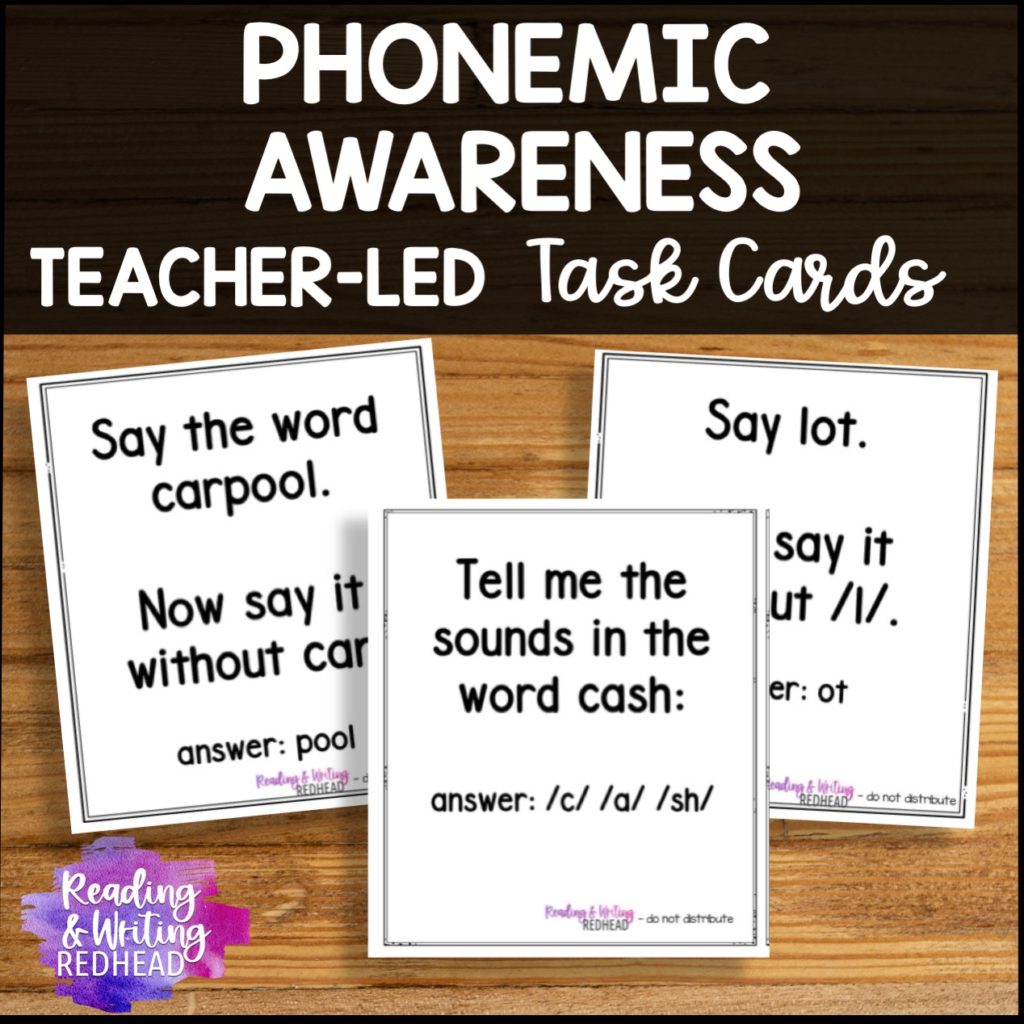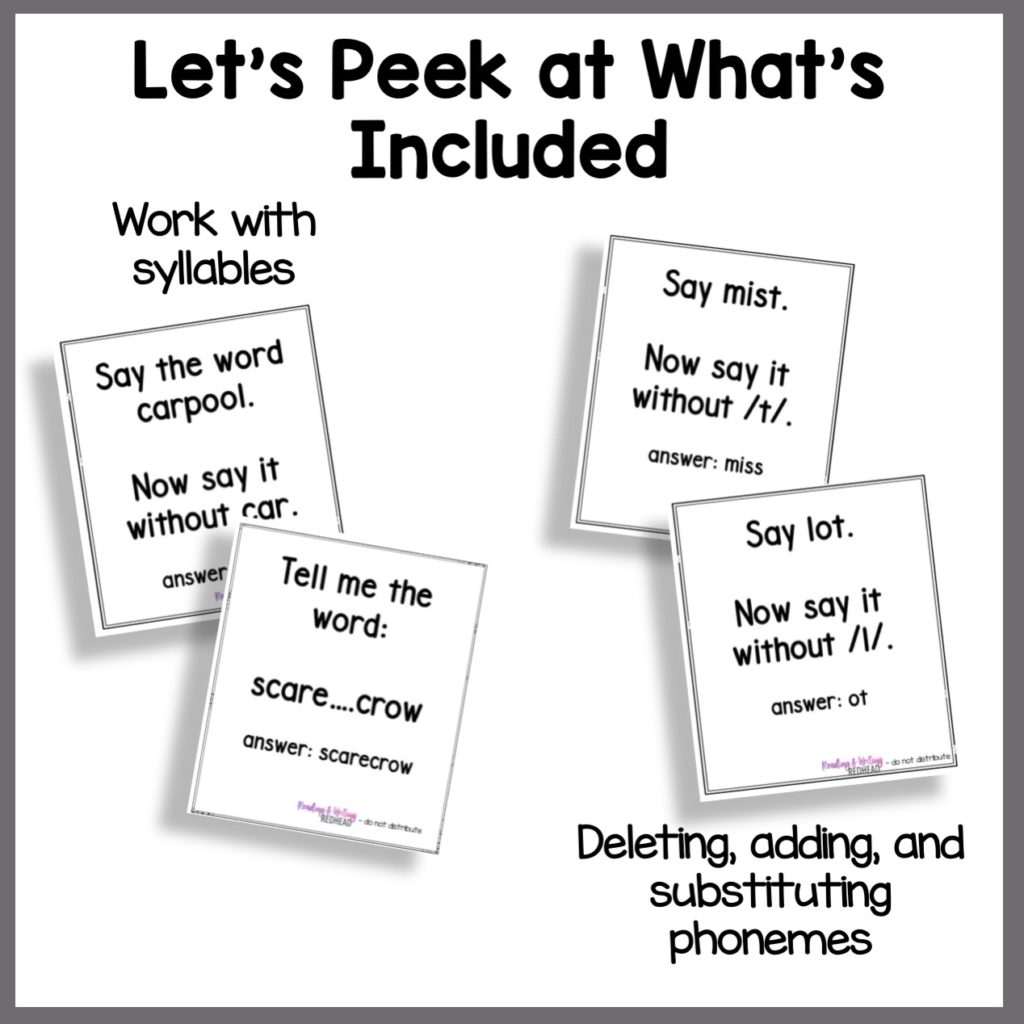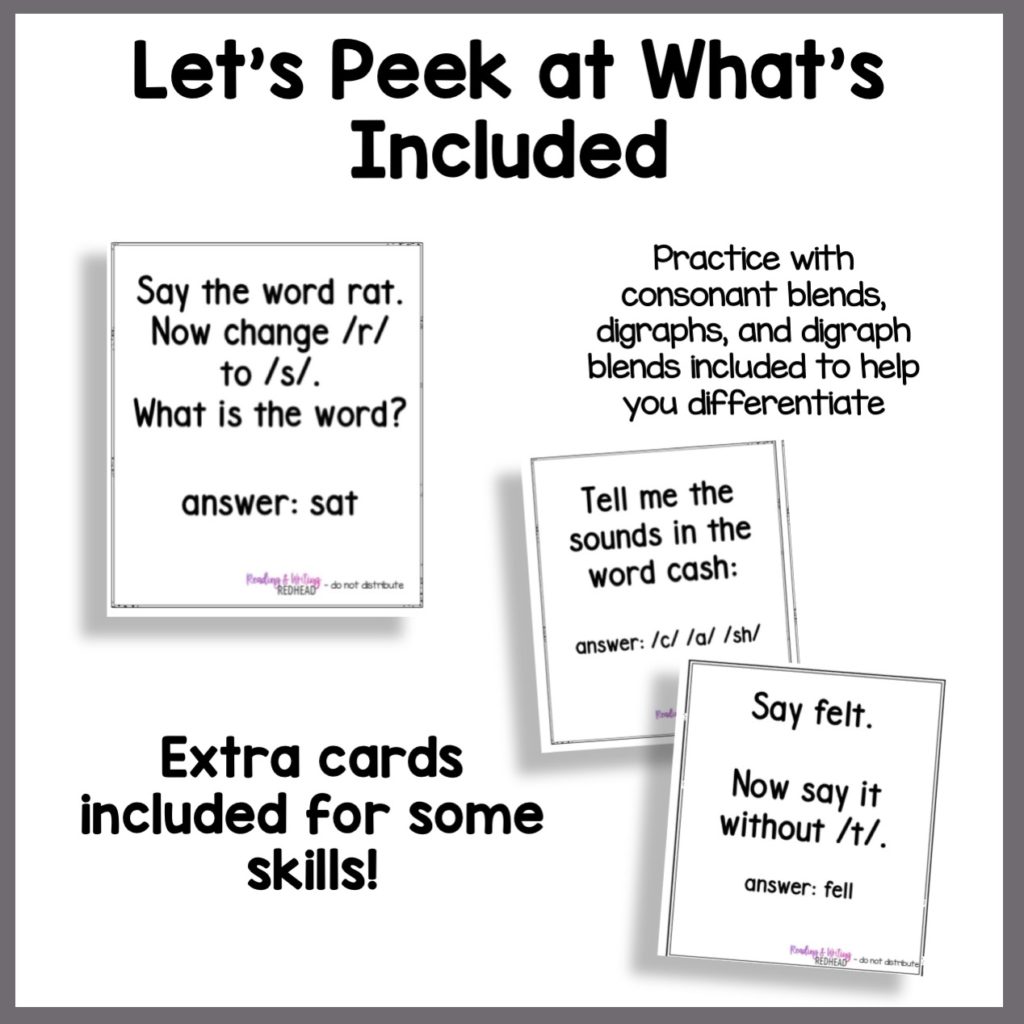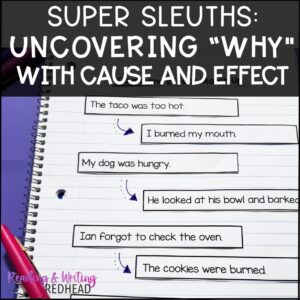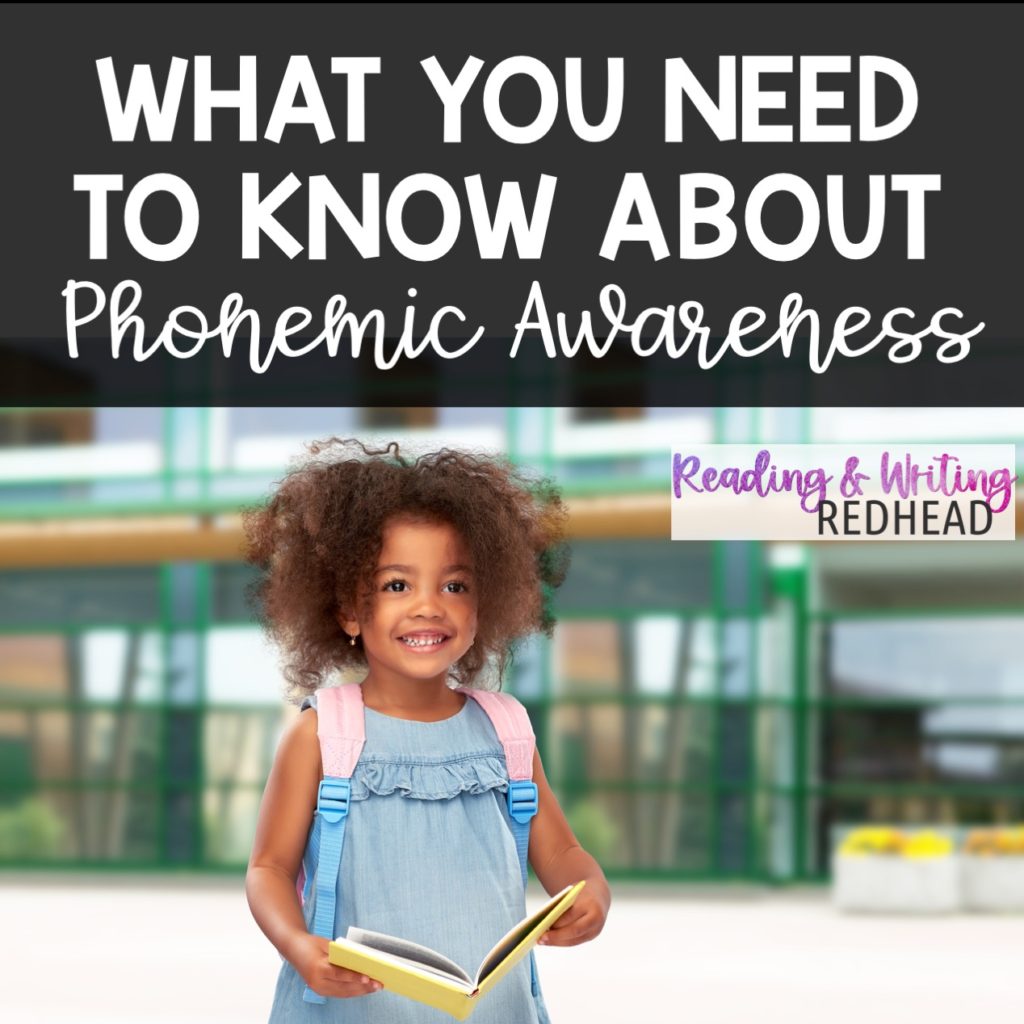
You probably have heard about phonemic awareness, the Science of Reading, and/or orthographic mapping. I’m here in case you are confused to give you the basics of phonemic awareness! That way you can teach reading this year with confidence!
WHAT IS IT?
Phonemic Awareness is the understanding of sounds and the ability to manipulate individual speech sounds orally.
WHAT ARE THE MAJOR ASPECTS?
The major aspects of phonemic awareness are noticing (blending and segmenting), deleting, adding, and substituting sounds.
Phoneme Discrimination
This is the ability to hear the similarities and the differences in phonemes (two or more), usually within words. So you would practice this by asking your class : Which word has a different beginning sound: “cat, cop, jam”. You can also practice this with middle (medial) and ending sounds.
Phoneme Deletion
Deletion of phonemes is removing one phoneme from a word completely. This can lead to a new word or a nonsense word. Here’s an example:
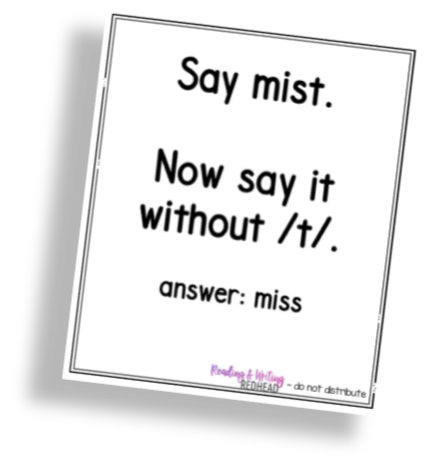
Phoneme Substitution
This is the most complex skill of the three because it involves several different skills in one! Students remove one phoneme and replace it with another. For example, the teacher might say “Say lot. Replace the /l/ in lot with /p/. What’s the new word?” and the student says “pot”.
To summarize, noticing phonemes and blending and segmenting are easier phonemic awarenss skills and manipulating phonemes (add/delete and substituting ) are more complex.
HOW IT IS HELPFUL?
Practicing phonemic awareness supports orthographic mapping, which is key to success in learning to read. It is also an important part of the research that is the basis of the Science of Reading. I found this quote which resonates: “”Providing more robust and intentional phonemic awareness instruction… can pay huge dividends in getting readers off to a stronger start…” (Brady 2020).
HOW LONG WILL IT TAKE?
Solid phonemic awareness does not take tons of time or expensive materials. You maybe should spend 2-4 minutes on it, 3-5 days a week!
HOW TO START:
Start with 2 phoneme words ( it, at, is) and progress to 3+ phoneme words. Eventually when students are solid, move on to words with consonant blends.
Keep reading for more tips!
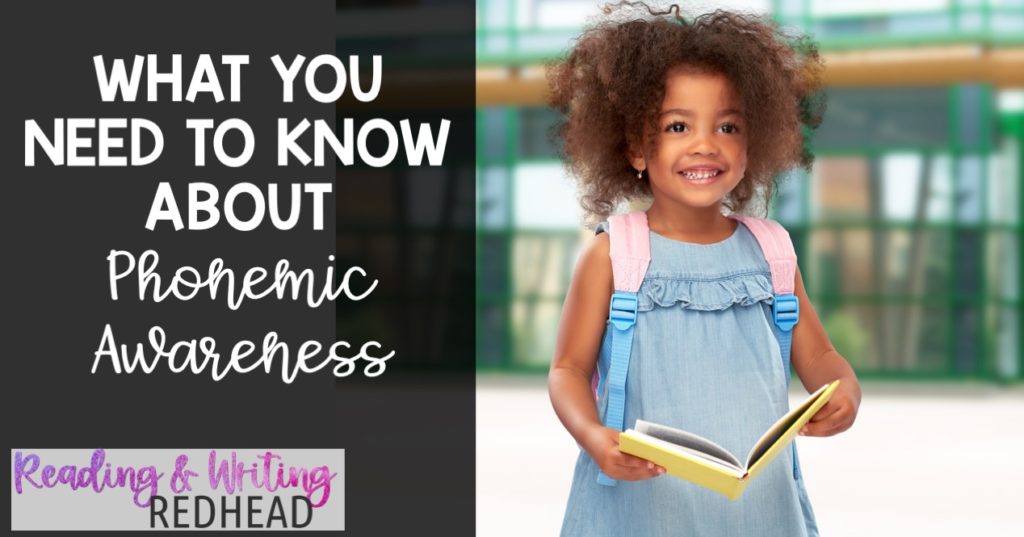
You can take a look at my new Phonemic Awareness Teacher Led activities! With this resource you can have everything you need at your fingertips. There are 30-36 task cards for each skills and 80 pages or so in all!
For more detailed information, try the book Shifting the Balance by Kari Yates and Jan Burkins which I read this summer.

If you want some more ideas to help you with teaching, check out these blog posts!
- What is Phonemic Awareness?
- What is Phonological Awareness?
- 5 Quick Ways to Assess Students
- 8 Ways to Use Pop Its to Engage Learners
- Reading Intervention All in One Place


